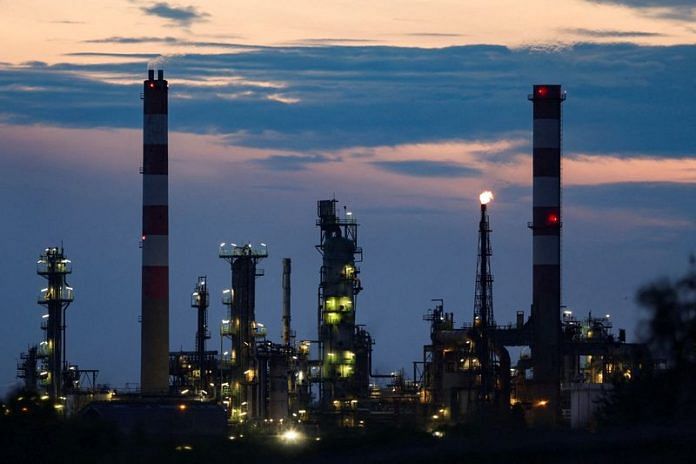By Georgina McCartney
HOUSTON (Reuters) -Oil prices rose on Thursday as the European Central Bank cut interest rates for the first time in roughly five years, and Denmark’s central bank followed with its own rate cut.
Brent crude futures were up $1.07 or 1.36% at $79.48 a barrel by 11:22 a.m. EDT (1522 GMT). U.S. West Texas Intermediate crude futures were up $1.09 or 1.47% at $75.16.
On Wednesday, oil benchmarks rose more than 1%, bouncing off a slide of nearly $8 a barrel over the previous five sessions that took prices to four-month lows.
On Thursday, the European Central Bank went ahead with its first interest rate cut since 2019, citing progress in tackling inflation but cautioning the fight was far from over.
Denmark’s central bank has now lowered its benchmark interest rate by 25 basis points to 3.35%.
Lower fuel costs and an easing of post-pandemic supply snags have helped drive inflation down to 2.6% in the 20 countries using the euro, from 10% in late 2022.
Investors are now less certain than they were a few weeks ago that inflation has retreated enough for the ECB to institute a major easing cycle.
In the U.S., economist now predict the Federal Reserve will cut rates in September, according to Reuters’ May 31-June 5 poll. Lower interest rates decrease the cost of borrowing, which can speed economic growth and boost oil demand.
The number of Americans filing new claims for unemployment benefits rose last week, and first-quarter unit labor costs rose by less than previous thought, the Labor Department said.
While this shows a cooling labor market, it is unlikely to push the Fed to start rate cuts.
Meanwhile, trading house Trafigura’s chief economist Saad Rahim said the OPEC+ decision to phase out some output cuts, combined with strong fuel supplies, has driven oil prices lower.
OPEC+, the Organization of the Petroleum Exporting Countries (OPEC) and allies, agreed on Sunday to extend most production cuts into 2025, but left room for voluntary cuts from eight members to be unwound gradually.
OPEC Secretary General Haitham Al Ghais and Russian Deputy Prime Minister Alexander Novak expressed optimism about continued strong demand for oil.
“Oil markets have over-reacted to the mildly negative OPEC+ meeting outcome. Demand indicators have certainly softened somewhat recently, but are not falling off a cliff,” Barclays analyst Amarpreet Singh wrote in a note.
U.S. crude stocks jumped by 1.2 million barrels in the week to May 31, data from the U.S. Energy Information Administration showed. Analysts had expected a drawdown of 2.3 million barrels.
“Summer inventory draws should be enough to get Brent oil back into the high $80s-$90 range by September,” but prices could come under pressure in 2025 from slower demand and non-OPEC supply growth, J.P.Morgan analysts wrote in a note.
The bank forecasts Brent to average $83 this year and $75 next year.
(Reporting by Georgina McCartney in Houston, Deep Vakil in Bengaluru, Robert Harvey in London, and Jeslyn Lerh in Singapore; Additional reporting by Colleen Howe in Beijing; editing by Varun H K and Jason Neely)
Disclaimer: This report is auto generated from the Reuters news service. ThePrint holds no responsibilty for its content.



